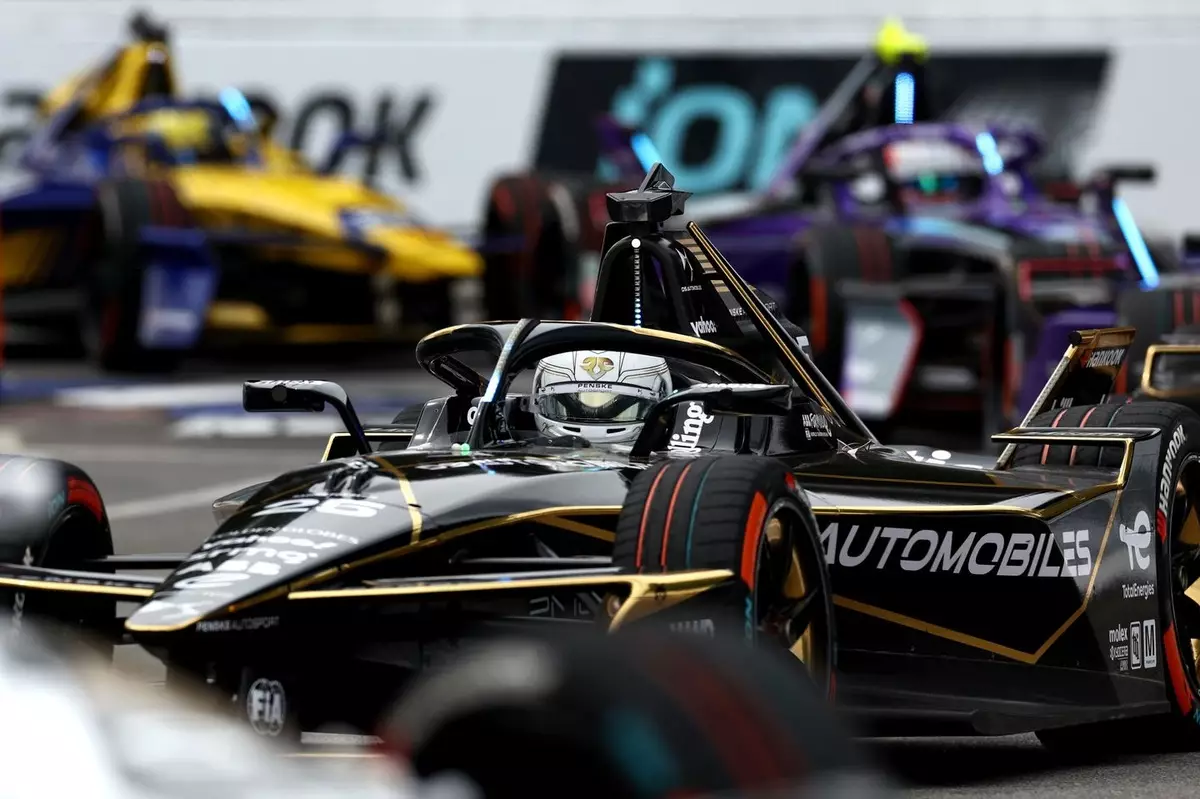Formula E has consistently set itself apart from traditional motorsports by embracing cutting-edge technology and sustainability. With the introduction of the Gen3 Evo car this season, which features significant advancements such as four-wheel drive capabilities and a revamped tire strategy with softer Hankook rubber, the league is poised for an exhilarating round of races. The updates aim to improve performance, with lap times already showcasing dramatic enhancements in various locations, such as nearly three seconds quicker poles in Sao Paulo and 2.3 seconds faster in Mexico. This shift is not just about speed; it reflects a broader commitment to innovation within the realm of electric racing, setting the stage for more exciting competitions.
Yet, the impending debut of the Pit Boost at the Jeddah E-Prix on February 14-15 introduces complexities that have sparked concerns, particularly from seasoned drivers like two-time champion Jean-Eric Vergne. Developed over more than two years, the Pit Boost is designed to recharge every car’s battery by 10% at an impressive 600kW during a mandatory pit stop that spans approximately 30 seconds. As fascinating as this development may sound, it also raises questions about the potential ripple effects on race dynamics.
The nervous anticipation surrounding the Pit Boost lies in its capacity to alter traditional racing strategies. Vergne has voiced apprehensions that the introduction of such a mechanism could inadvertently lead to situations where race leaders find themselves one lap down, particularly if pit stops coincide with safety cars or other interruptions. He asserts that the inherent unpredictability of these elements might dilute the competitive integrity of the race. The possibility of a race being defined by luck rather than skill could overshadow the principles that underpin motorsport excellence.
Moreover, if a driver optimally times a pit stop only to be caught off guard by a safety car, they could return to the track significantly ahead of competitors who remained on the track. With this dynamic in play, it is clear that while the intention behind the Pit Boost is to enhance excitement and strategic depth, it may inadvertently diminish the clarity of racing outcomes. Allowing luck to dictate results could undermine the meticulous planning and execution that drivers and teams invest throughout the season.
Adding another layer of complexity, the enhanced Attack Mode for Gen3 vehicles brings newfound possibilities for overtaking and strategic plays. However, like the Pit Boost, it comes with its own set of challenges. Drivers, such as Vergne, have highlighted the frustrations associated with activating Attack Mode only to have a race-altering event occur shortly thereafter. In races where the performance of Attack Mode can significantly impact championship standings, such unfortunate timing can be detrimental. Being subjected to factors beyond their control can leave drivers feeling powerless and disillusioned, especially when they know how critical each adjustment can be in terms of performance.
As the competition intensifies in Formula E, it’s evident that the balance between aggressive innovation and competitive fairness is delicate. The aspiration to increase excitement and improve racing dynamics must be countered with measures that mitigate the influence of luck and randomness.
The Path Forward: Seeking Solutions
In light of these significant changes, it is crucial for the FIA and Formula E to explore solutions that can help level the playing field. This could involve reevaluating the timeframe of pit stops or finding ways to synchronize strategies across the grid better. In a sport where fractions of a second can define success or failure, even minor adjustments to rules and regulations can have profound implications.
As we anticipate the unfolding of the season, the dialogues between drivers and officials will be essential in shaping a fairer competitive landscape. The reflections of drivers such as Vergne and Sebastien Buemi, who echo similar sentiments about the unpredictability of luck in race outcomes, provide valuable insights. Formula E stands at a crossroads between pioneering technology and maintaining the essence of competitive racing, and navigating this path will be key to sustaining its growth and relevance in the motorsport community.
Ultimately, the challenge lies in striking a balance where innovation enhances rather than overshadows the core competitive spirit of Formula E. The coming races will serve as a litmus test for the efficacy of these new regulations and their capacity to foster both excitement and fairness on the track.


Leave a Reply